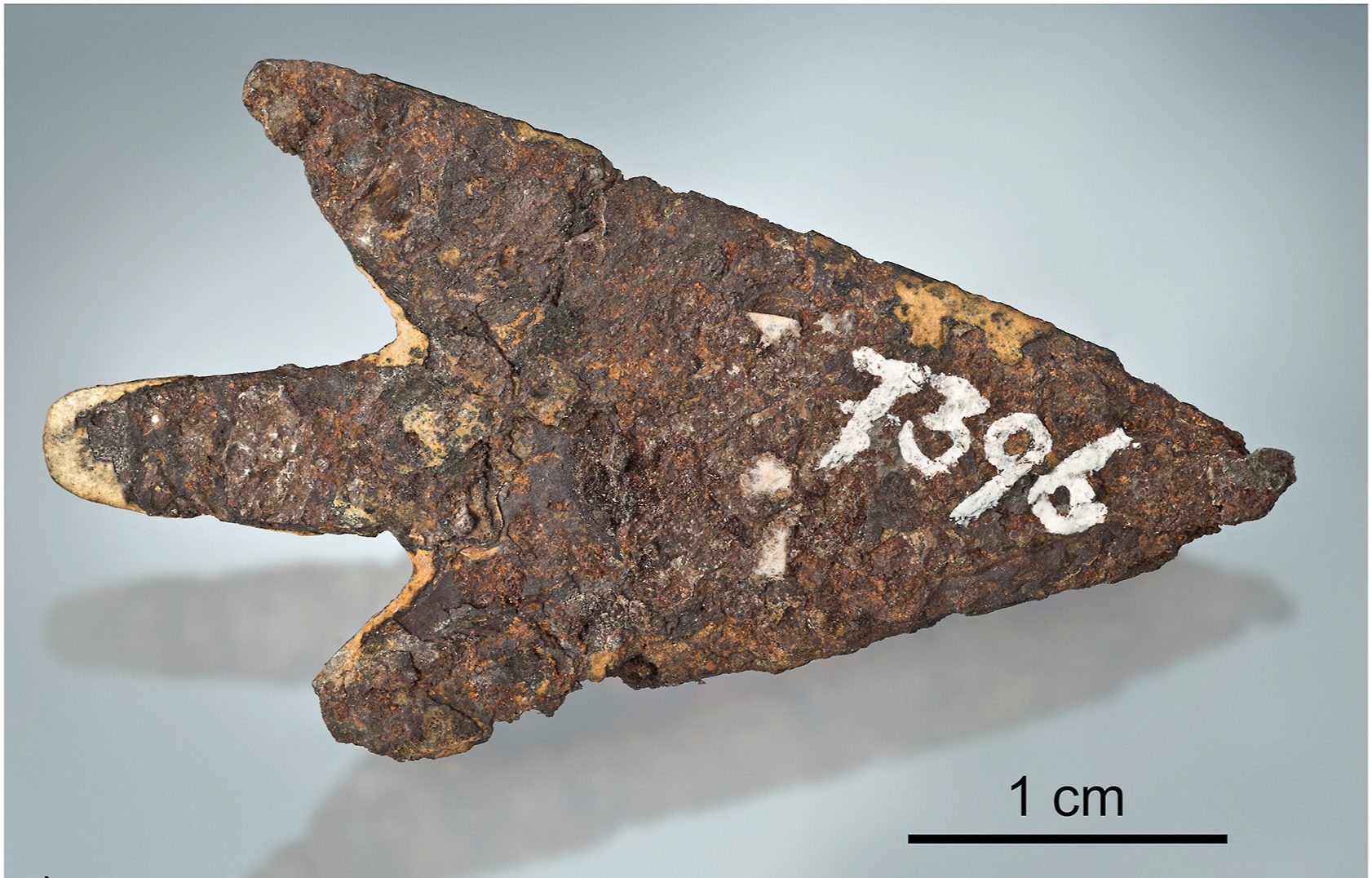
New analysis on a Bronze-Age arrowhead, discovered more than two centuries ago in Mörigen, Switzerland, has found that the artifact was fashioned out of a meteorite that crashed to Earth about 3,500 years ago.
The rust-coated arrowhead, which measures about 1.5 inches long and weighs 2.9 grams, has been held by the Bern Historical Museum since its discovery. In 2021, a team of scientists from the institution began studying the relic using noninvasive methods—including electron microscopy, X-ray tomography, and gamma spectrometry—to prevent any damage.
In a new paper published in the Journal of Archaeological Science, the team reported finding “significantly elevated nickel concentration” and aluminum-26 in the Mörigen arrowhead—indicators that the material, exceedingly rare, had been exposed to cosmic rays and originated from a large rock.
“The greater the size of a meteoroid, the less aluminum-26 it contains,” Beda Hofmann, the study’s lead author, told ERR News. “Figuratively speaking, its outer layers function as a shield, protecting its interior from cosmic radiation. However, upon entry into the atmosphere, most of the exterior layer is destroyed by combustion.”
X-ray tomographic sections of the Mörigen arrowhead. Photo: doi.org/10.1016/j.jas.2023.105827.
The study also found traces of grind marks, left behind from its shaping, and remains of tar, which was likely used to attach the arrowhead to a shaft.
While the researchers initially suspected the material to have come from the Twannberg meteorite, which hit a barley field in Twann about 170,000 years ago, the arrowhead’s metal content led them instead to the Kaalijarv meteorite.
The Kaalijarv meteorite, also known as Kaali, landed in the region of Estonia during the Nordic Bronze Age (c. 1700–500 B.C.E.). The impact of the meteorite was such that it produced several craters measuring some 328 feet in diameter—the largest, Kaalijarv, on the island of Saaremaa, is more than 360 feet wide.
Among the many other artifacts excavated from Twannberg, the Mörigen arrowhead is the only one made from an entirely different meteorite iron. This fact, coupled with Kaalijarv’s timing and explosive impact, have led the team to speculate that the arrowhead could have originated in Saaremaa, before it was traded, making its way to Switzerland.
“It’s been well documented that trade was well established over large distances during the Bronze Age. These early people likely knew that when the impact happened there in 1500 B.C.E, the material was precious and had value to it,” Hofmann told Live Science.
Further analyses of archaeological finds in European collections, said the team, would be needed to determine the arrowhead’s journey from Estonia to Mörigen.
The Mörigen arrowhead will go on view at the Bern Historical Museum as part of the exhibition, “And Then Came Bronze!” (February 1, 2024–April 21, 2025), which explores how the discovery of bronze spurred creative and social progress.
More Trending Stories: